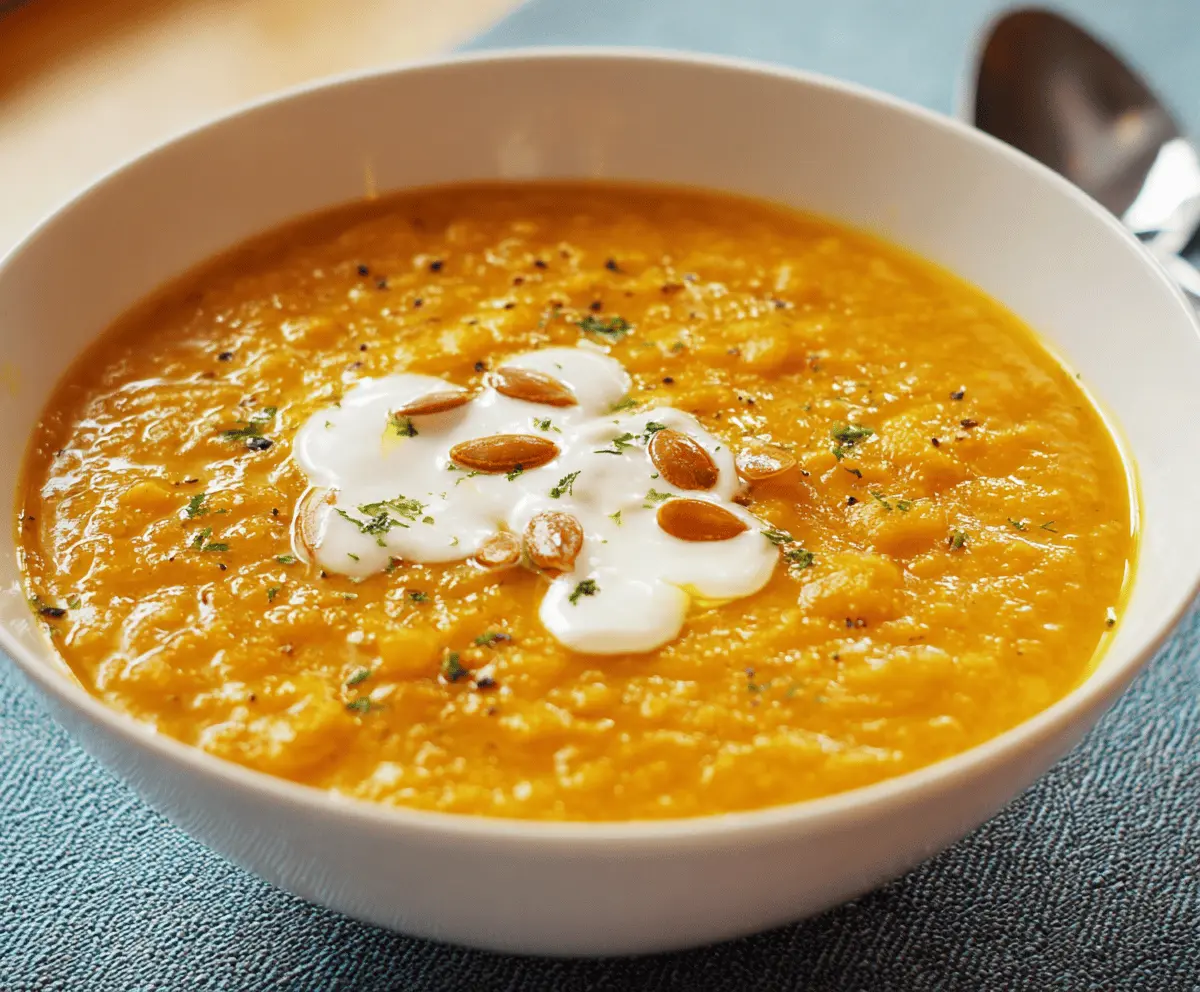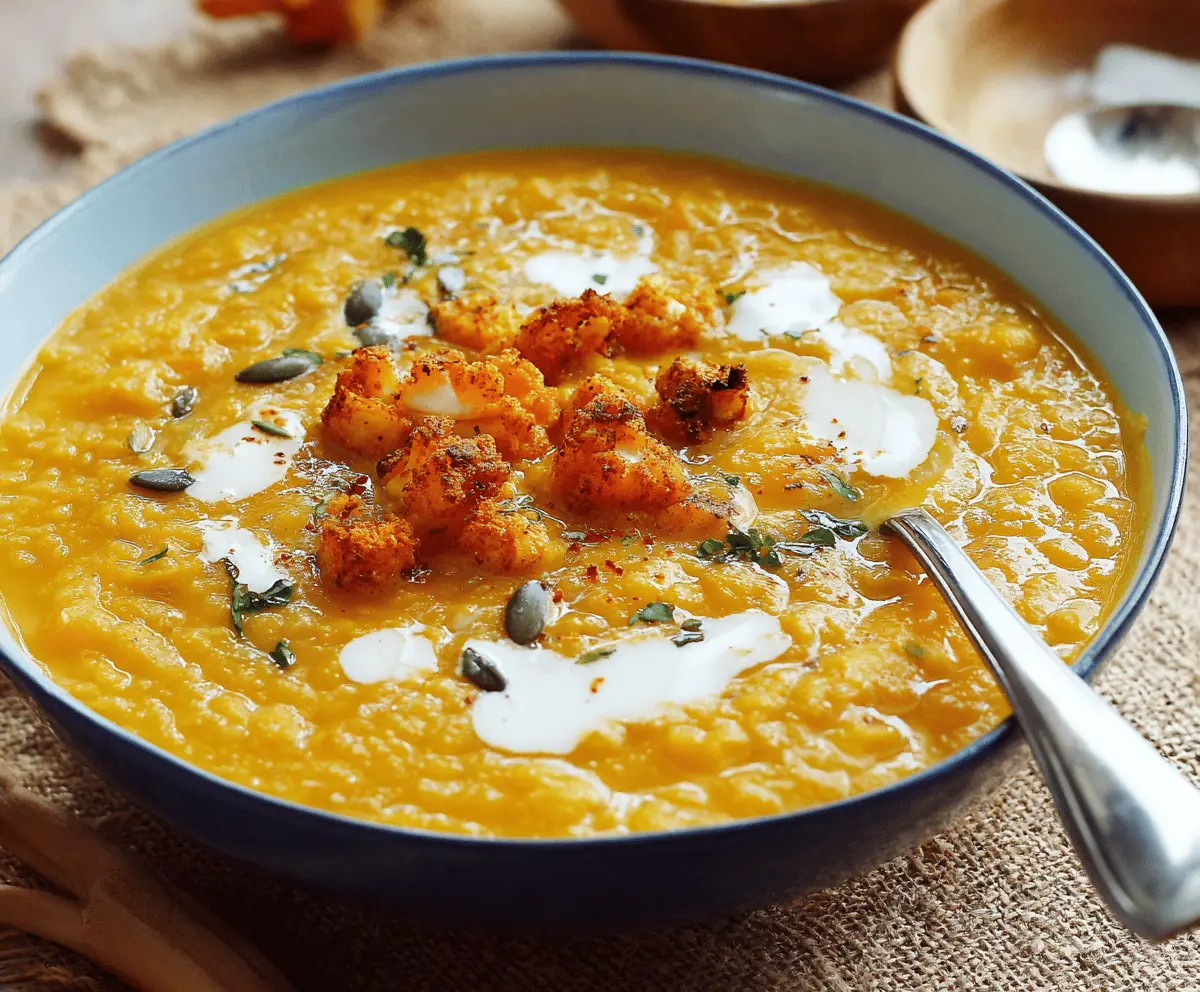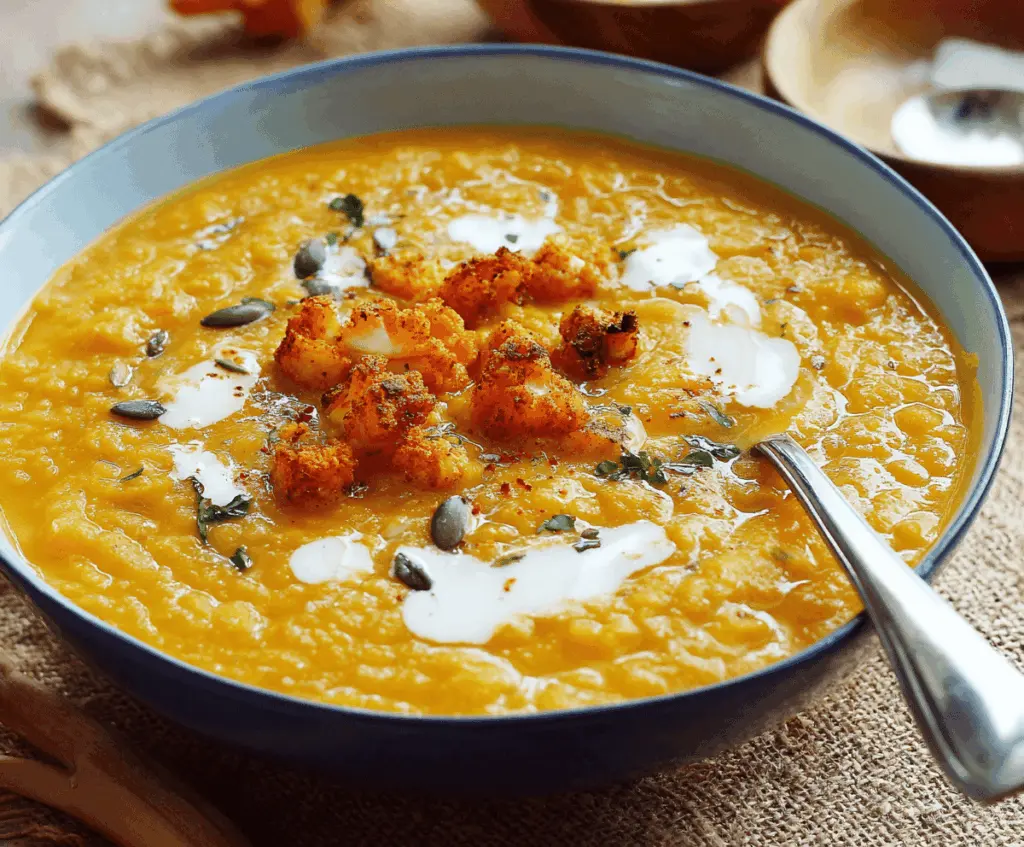Pumpkin Curry Soup is a cozy bowl of warmth and flavor that blends smooth pumpkin, creamy coconut milk, and fragrant curry spices. It’s both comforting and a little bit exciting with just the right touch of spice to keep things interesting. The pumpkin gives it a lovely sweetness and velvety texture that feels like a gentle hug on a chilly day.
I love making this soup when I want something that’s easy but feels special. It’s perfect for when you don’t want to fuss in the kitchen but still want to treat yourself to a bowl full of great flavors. I usually add a bit more curry powder than the recipe calls for because I enjoy that spicy kick that wakes up your taste buds without being too much. Plus, the coconut milk makes the whole thing super smooth and creamy.
One of my favorite ways to serve this soup is with a sprinkle of fresh cilantro and a squeeze of lime on top to brighten up the flavors. It also pairs nicely with some crusty bread or warm naan for dipping. This soup has become a go-to meal for me during fall and winter, and I’m always happy when I find a new reason to make it again and again.
Key Ingredients & Substitutions
Pumpkin Puree: This is the heart of the soup. Fresh pumpkin is great if you have time, but canned pumpkin puree works well and saves effort. Just make sure it’s pure pumpkin, not pie filling with spices.
Curry Powder: It adds that warm, spicy flavor. If you prefer a milder taste, start with one tablespoon and add more later. You can swap with garam masala or curry paste for different flavor twists.
Coconut Milk: This gives the soup a creamy texture and subtle sweetness. Full-fat coconut milk makes it richer, but light coconut milk is fine if you want fewer calories. You can also use almond milk for a less creamy option.
Roasted Cauliflower: It adds crunch and a mild roasted flavor that contrasts well with the smooth soup. If cauliflower is not your favorite, roasted chickpeas or toasted nuts offer a nice alternative.
How Can I Make the Soup Smooth and Creamy Without a Mess?
Blending the soup well is key to achieving a smooth, creamy texture. Here are some tips:
- Use an immersion blender directly in the pot for easy blending and less cleanup.
- If using a countertop blender, blend in small batches to avoid splatters. Let the soup cool a bit before blending.
- Be careful when blending hot liquids—fill the blender just halfway and hold the lid down with a kitchen towel.
- After blending, return soup to the pot to warm it nicely without boiling, which can change the texture.
Following these steps gives you a silky soup that’s perfect for cozy meals.

Equipment You’ll Need
- Large soup pot – I use this because it’s big enough to hold all the ingredients and allows for easy stirring.
- Immersion blender – makes blending the soup smooth and simple right in the pot without transferring hot liquids.
- Measuring spoons and cups – helps you get the spices and liquids just right for the best flavor.
Flavor Variations & Add-Ins
- Protein boost: Add cooked chicken, chickpeas, or tofu for a more filling soup, perfect for lunch or dinner.
- Extra spice: Stir in a dash of hot sauce or sprinkle red pepper flakes on top for more heat.
- Cheesy touch: Mix in a bit of shredded cheese, like sharp cheddar or Monterey Jack, to make it extra creamy and flavorful.
- Herb topping: Garnish with fresh herbs such as parsley, basil, or cilantro for a bright, fresh flavor.

Equipment You’ll Need
- Large soup pot – big enough to cook and stir the soup comfortably.
- Immersion blender – perfect for blending the soup smooth right in the pot without mess.
- Measuring cups and spoons – to get the right amounts of spices and liquids.
- Cutting board and knife – for chopping onion, garlic, ginger, and any garnish veggies.
- Optional: Baking sheet – useful if you want to roast the cauliflower for garnish.
Flavor Variations & Add-Ins
- Protein boost: Stir in cooked chickpeas, diced chicken, or tofu for a heartier soup.
- Extra heat: Add a splash of hot sauce, more cayenne pepper, or a pinch of red pepper flakes to spice it up.
- Herb twist: Garnish with fresh herbs like cilantro, parsley, or basil to brighten the flavors.
- Nutty crunch: Toasted pumpkin seeds or chopped nuts add great texture and flavor.
- Cheesy addition: Stir in a handful of shredded cheese like sharp cheddar for extra richness.
Can I Use Fresh Pumpkin Instead of Canned?
Yes! If using fresh pumpkin, peel, seed, and cube it, then roast or boil until tender before pureeing. This might add a bit more prep time but gives a fresher flavor.
How Should I Store Leftover Pumpkin Curry Soup?
Store leftovers in an airtight container in the fridge for up to 4 days. Reheat gently on the stove or in the microwave, stirring occasionally for even warming.
Can I Make This Soup Vegan?
Absolutely! This recipe is naturally vegan as long as you use vegetable broth and coconut milk. Just double-check the broth ingredients to be sure.
What Can I Use Instead of Coconut Milk?
You can substitute coconut milk with almond milk or cashew cream for a milder creaminess. However, the soup won’t have the same rich coconut flavor.



